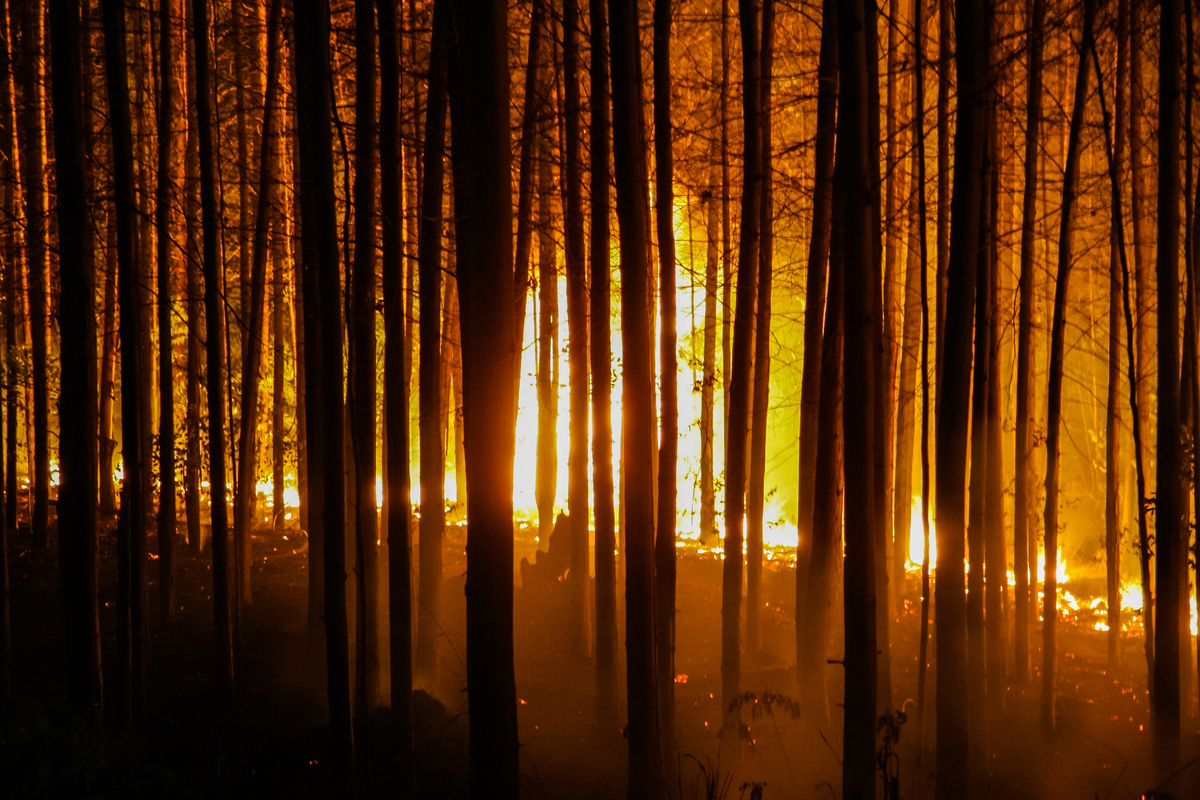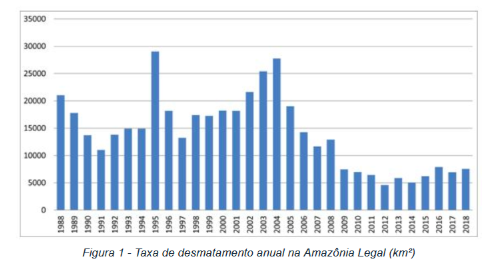what are countries like brazil doing to protect rainforest resources?

Equally the world turned its gaze to Brazil these terminal few weeks, the frenzy has reached a fevered pitch. Characterized variously as the "heart of the planet" or the "world's lungs," the vast Amazon is under assail by man-fabricated raging fires to clear the forest for agriculture and cattle grazing.
The opponents of deforestation say that the fires are an assault on the planet, an assault on the natural heritage of the earth's pristine forests, and a genocidal attack on Brazil's indigenous population — in addition to putting u.s. all at immense take a chance through destroying a massive carbon sink while emitting vast amounts of CO2 into the atmosphere, exacerbating climate change.
Putting aside the obvious absurdities (Cristiano Ronaldo shared photos of a burn down from southern Brazil in 2013; Madonna and Leonardo DiCaprio ushered their millions of followers into activity with photos of decades-quondam Amazon fires), world politicians condemned the Brazilian president, Jair Bolsonaro, and blamed his policies of opening up the Amazon for having prompted these arsonists.
Many of the melodramatic claims are likewise incorrect or misleading: the fires appear to be clearing already-deforested fields and not to be wildly out of control; the Amazon does not supply the planet with twenty percent of its oxygen (or even six percent); rather, it consumes all the oxygen information technology produces; smoke from the Amazonian fires did not fall down every bit blackness pelting in São Paolo 3,000 kilometers abroad. According to the BBC, meteorologists merits that rest came from entirely separate burnings much closer.
Many of the explosive numbers that are thrown around (35 or fourscore percent more fires than final yr, a xv, 39, 73, 88, or 278 pct increase of net deforestation) are technically correct, but highly misleading — the result of sensationalist journalists playing fast and loose with official statistics and ruddy-picking fourth dimension periods.
The massive range of the figures quoted does signal that there's something statistically fishy virtually how they were generated. A more than sober assessment suggests that the number of fires is somewhat higher than concluding year, but in line with 2016–17 and long-run averages. Deforestation rates accept seen a slight uptick over the terminal few years in selected states (Pará, Mato Gross, and Amazonas), but deforestation in the Brazilian part of the Amazon forest is essentially flat over the terminal decade — and massively downwards over a xxx-year horizon.

At 7,500 square kilometers in 2018 (roughly the size of Delaware, or 0.2 percent of the total Brazilian Amazon forest), the amount of rainforest Brazilians are chopping downward hardly amounts to an "ecocide." A Wall Street Journal editorial offered the reasonable bespeak that rich countries practice a better job than poor countries in caring for their environs, noting the long-standing truth that left-leaning environmentalists never want to face: "wealth overcomes 'climatic change', so the solution would be to make everyone wealthy."
Instead of reproaching politicians, sensationalizing the news, or projecting imminent environmental disaster, let's consider the more intriguing question: maybe Brazil should clear more of its rainforest rather than less?
Brazil is a comparatively poor country, and the North, the region where the Amazon forest is located, even more then, comparable to countries similar Albania, Namibia, or Republic of iraq — in contrast to the emerging middle course standards of southern Brazilian states similar São Paolo or Rio de Janeiro. It is an overall resource-heavy economy, where more than half of its exports consist of raw materials.
Transforming relatively unproductive rainforest land into relatively more productive agricultural land would meliorate the livelihood of some of Brazil's poorest people — indeed, this is the primary reason they are doing what they're doing. Indeed, why would we not want people to take advantage of a major asset at their doorstep, an asset that may fuel their growth and transition into a richer life?
The Swedish Lesson
Today, few people remember of Sweden as a raw textile–exporting developing state. Its endless pine forests, together with those of its Norwegian and Finnish neighbors, attain way into the Chill wilderness. Even today it is a much more forested land than Brazil and has a thing or two to say almost successfully preserving and developing its forests.
In the 1870s, half of its exports consisted of timber — a more dramatic share than Brazil's more diversified raw-materials industries — and it made upwards a larger share of its Gross domestic product than forestry and agriculture does in Brazil today. Since the explosive growth of lumber and sawmill industries at the plough of the last century, the book of Swedish forests has increased by at to the lowest degree 80 percent. Just nearly 0.three percent of the Swedish wood remains untouched, aboriginal forest, but nobody in their right mind would say that the logging and profit-driven management of the residual of Sweden'due south vast forest has been an environmental disaster for the Scandinavian peninsula.
Here'due south the secret: the vast majority of Sweden'due south forests are privately owned, privately managed — and sustainably cultivated. Only 3 percent is endemic by the government (another fourteen percent is owned by a government-owned corporation, run like whatsoever other turn a profit-seeking business), and almost of that for national-heritage reasons and located in remote, inaccessible mountain regions. Indeed, Sweden's forests have grown in size and volume equally the country grew richer and its economy transitioned into other industries. Since 1975, when its per capita GDP rivaled Brazil's today, cyberspace reforestation rates accept reliably been around three–iv percent.
In contrast, about 40 percent of the Amazon forest is protected land, either allocated to ethnic tribes or under doubtfully enforced public conservation. Around 35 pct is privately owned, either every bit legally registered property or as possession nether Brazil'southward infamously complicated land-tenure laws. The rest, about i-quarter of the Amazon forest, is unowned, unallocated public land. Nobody familiar with Hernando de Soto'southward famous Mystery of Upper-case letter is at a loss to understand why this is a problem.
Nor does individual ownership of the commons come up as a surprise to researchers of the Amazon; they take loudly voiced that stance for years. For example, Professor Brian Robinson of McGill University and colleagues at the University of Wisconsin-Madison concluded in a meta-study of deforestation and forests from a couple of years ago that "public land seems to be particularly vulnerable to negative forest outcomes in Southward America." Two Brazilian researchers at the Economics Institute at the State Academy of in Campinas Brazil take ended the same matter: "The deforestation occurs mainly because holding rights are not conspicuously established, and occurs on land straight or indirectly related to the state."
Conclusion
Facts and reality accept never been the green movement's strong suit, and it has consistently operated on emotions, scare tactics, and worst-case-scenario catastrophizing. Yes, there are fires raging in parts of the Amazon. Yes, in parts of this vast rainforest the deforestation rates have risen slightly after some years of remarkably low clearing. The hysterical environmental response we are seeing is, equally usual, massively exaggerated.
It is far from obvious that immigration Amazon rainforest is a bad idea; indeed, at this stage of Brazil's evolution, it is hardly unreasonable to say that they ought to catechumen more rainforest into agricultural land. 90 pct of the world'due south deforestation happened before 1950, and the Earth Wildlife Fund target of zero net deforestation looks like it will be met next yr. Forests can exist replanted, and they overwhelmingly are — once countries grow richer, and one time we're past "Peak Farmland." If Simon Kuznets' famous bend ever applied to anything, deforestation seems similar a prime number candidate.
The Swedish story of forestry offers some insights for Brazil's forestry. Private enterprise, with secure private holding, combines flourishing industry with long-term sustainability.
Helm Chainsaw is by no means a balanced and thoughtful leader, and Brazil struggles with many political and economic issues. Still, the outcome has a fairly simple solution: private belongings rights. Sweden'southward forests send their flourishing regards.
Joakim Book

Joakim Book is a writer, researcher and editor on all things money, finance and financial history. He holds a masters caste from the Academy of Oxford and has been a visiting scholar at the American Establish for Economic Research in 2018 and 2019.
His work has been featured in the Financial Times, FT Alphaville, Neue Zürcher Zeitung, Svenska Dagbladet, Zero Hedge, The Property Relate and many other outlets. He is a regular correspondent and co-founder of the Swedish freedom site Cospaia.se, and a frequent author at CapX, NotesOnLiberty, and HumanProgress.org.
Source: https://www.aier.org/article/why-shouldnt-brazil-burn-its-rainforest/
0 Response to "what are countries like brazil doing to protect rainforest resources?"
Post a Comment